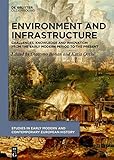Environment and Infrastructure : Challenges, Knowledge and Innovation from the Early Modern Period to the Present / ed. by Giacomo Bonan, Katia Occhi.
Material type: TextSeries: Studies in Early Modern and Contemporary European History ; 6Publisher: München ; Wien : De Gruyter Oldenbourg, [2023]Copyright date: ©2023Description: 1 online resource (V, 221 p.)Content type:
TextSeries: Studies in Early Modern and Contemporary European History ; 6Publisher: München ; Wien : De Gruyter Oldenbourg, [2023]Copyright date: ©2023Description: 1 online resource (V, 221 p.)Content type: - 9783111100647
- 9783111114132
- 9783111112756
- 330
- online - DeGruyter
- Issued also in print.
| Item type | Current library | Call number | URL | Status | Notes | Barcode | |
|---|---|---|---|---|---|---|---|
 eBook
eBook
|
Biblioteca "Angelicum" Pont. Univ. S.Tommaso d'Aquino Nuvola online | online - DeGruyter (Browse shelf(Opens below)) | Online access | Not for loan (Accesso limitato) | Accesso per gli utenti autorizzati / Access for authorized users | (dgr)9783111112756 |
Frontmatter -- Contents -- The Hybrid Nature of Infrastructures -- I. Overview -- Provocations to Environmental History and History of Technology: The Anthropocene -- II. Urban Metabolism and the Transformation of Hinterlands -- Urban Environmental Infrastructure in the Eastern Alpine Region. (Sixteenth to Eighteenth Century) -- From “Stues” to “Çates” -- Uranium Stories -- III. The Multiple Scales of Enviro-Technical Systems -- Water as Infrastructure and the Scalar Mismatch -- The Ideal Public for Infrastructures -- Dirty New Natures -- IV. Hybrid Landscape: Infrastructures of Water Control -- Coping with Water -- Slow Infrastructures, Flood Protection and Extreme Weather Events -- Decadent Infrastructure? -- V. Conclusion -- Afterword: Reflections on Environmental Infrastructure -- Contributors
restricted access online access with authorization star
http://purl.org/coar/access_right/c_16ec
The material and energy flows that characterized the metabolism of preindustrial and industrial societies were organized through complex infrastructures based on interwoven social and natural elements. Analyzing infrastructures from many methodological and thematic perspectives, the present volume adopts an extensive periodization to identify the undeniable changes caused by industrialization and the persistence of pre-existing features and dynamics. The contributions range from the late Middle Ages to the 1990s and deepen historical characteristics of urban metabolism, the study of energy systems and their transitions, and the management and control of water resources. These reveal the strategies societies and states adopted to transform and adapt their surrounding environment in a constant and challenging equilibrium of diverse interests, whose impact over time has had environmental consequences on a global scale.
Issued also in print.
Mode of access: Internet via World Wide Web.
In English.
Description based on online resource; title from PDF title page (publisher's Web site, viewed 06. Mrz 2024)


